As with many things in life, catching a swarm of honey bees is all about opportunity and availability. In other words, luck. Bees swarm in the spring, as the nectar flow and lengthening days result in near-exponential population growth within a colony, and the bees run out of space in their hive. Capturing and rehiving a swarm is one of the best ways for a beekeeper to increase the number of hives in her apiary, for a few reasons:
- It’s cheap! Darn near free, except for the minor cost of whatever modified box or bucket used to contain the swarm. For example, for a few years we used an ordinary cardboard file box (the type you’d buy for about $2 at any office supply store) with mesh-covered windows as our official swarm catching box. Last year my husband bought a 5-gallon bucket with lid from a hardware store, cut some windows in it and taped on some mesh. It works better than the box, which was falling apart anyways and needed to be replaced. Still super cheap, too.
- Swarms come from locally adapted colonies. True, the mother colony that threw the swarm may have originated as a package colony bought from a commercial beekeeper from anywhere in the country, but at the very least it survived the winter here, which hints at potential long-term suitability for this particular location.
- Every swarm that is captured by a beekeeper and rehomed in a managed apiary is a swarm that will not turn a neighbor’s home/garage/fence/etc. into a hive. In terms of responsible beekeeping, this is a Really Good Thing™. It is much simpler to relocate a swarm than to remove an established colony from, say, inside the wall of a house. Most homeowners don’t like being told that in order to get rid of the colony of bees that has taken up residence between the studs in a wall, the wall will have to be cut open to make sure that all the bees, wax combs, and honey are removed.
Until this past weekend it had been an unfortunate spring for us as beekeepers. For the first time in our eight years donning the veil we had lost almost all of our hives over the winter; all of the hives at our house had died, and we were down to 1.5 hives at our second apiary. We had also missed out on a couple of swarm calls, which either came in when we couldn’t deal with them or another beekeeper got to the swarm first. One swarm flew off before we arrived to pick them up, ironically as we were on our way down the highway so I could give a talk on beekeeping to the Watsonville Wetlands Watch.
Much of that luck changed this past Saturday, when we got a call about two swarms in a backyard apple tree. Given that it was a sunny morning, we decided to capture the swarms before the scout bees found a new home site and persuaded their sisters to move into it. They were both good-sized swarms, one a bit larger than a basketball and the other about the size of a football.
Those streaky blurs in the sky aren’t UFOs or dust streaks on the camera lens; they’re bees in flight.
The swarms were both about 8 feet off the ground, which puts them nicely within reach of an ordinary ladder. We had brought a ladder with us and the homeowner had one as well, so we could catch both of the swarms at the same time. In the spirit of full disclosure: I can’t take any credit for catching these swarms, as I was taking pictures instead of being useful.
Swarm catching is pretty simple when the bees are clustered in a tree like this: You place a box (or bucket or whatever) under the swarm and either shake the bees into the box or cut the branch they’re clustered on and lower that into the box. Shaking tends to send a lot of bees into the air, but as long as the queen ends up in the box the rest of the bees will eventually find their way to her. When they’re all in the box you close it up and take it away.
The large swarm went into the bucket:
We brought the swarms to the apiary. The next step was to pour the bees from the box and bucket into their intended hives. And this is where our luck changed. One of the swarms, instead of settling into our Blue hive boxes, took off into the air. This happens sometimes, when for whatever reason the queen flies and all of the workers go with her. If the beekeeper is lucky they land some place accessible and can be recaptured. This swarm gathered very briefly in the poison oak at the top of a dead coffeeberry bush, then flew away across the street. I was unable to see where they were headed.
The good news was that the larger swarm was much more cooperative and remained in the Purple hive where they were dumped. Joining them in this apiary is the Rose hive, which was a split from one of our downtown hives. The weather on Sunday and Monday was cold and rainy, and today was the first day the bees had a chance to get out and fly. Today (Tuesday) we saw them orienting to their new home. We shouldn’t have any rain for the next several days, which will give them lots of time to forage. Swarms are usually primed and ready to go into building mode as soon as they reach their new home, so the queen in our Purple hive can start laying immediately (assuming, of course, that she was the old queen from the mother hive that threw the swarm; if she’s a virgin she’ll have to go on her mating flights first). It’ll be three weeks before we see an increase in the number of bees; in the meantime the population will decline as bees die off due to natural attrition. Thus around mid-May we should start seeing some big orientation events. Fingers crossed!

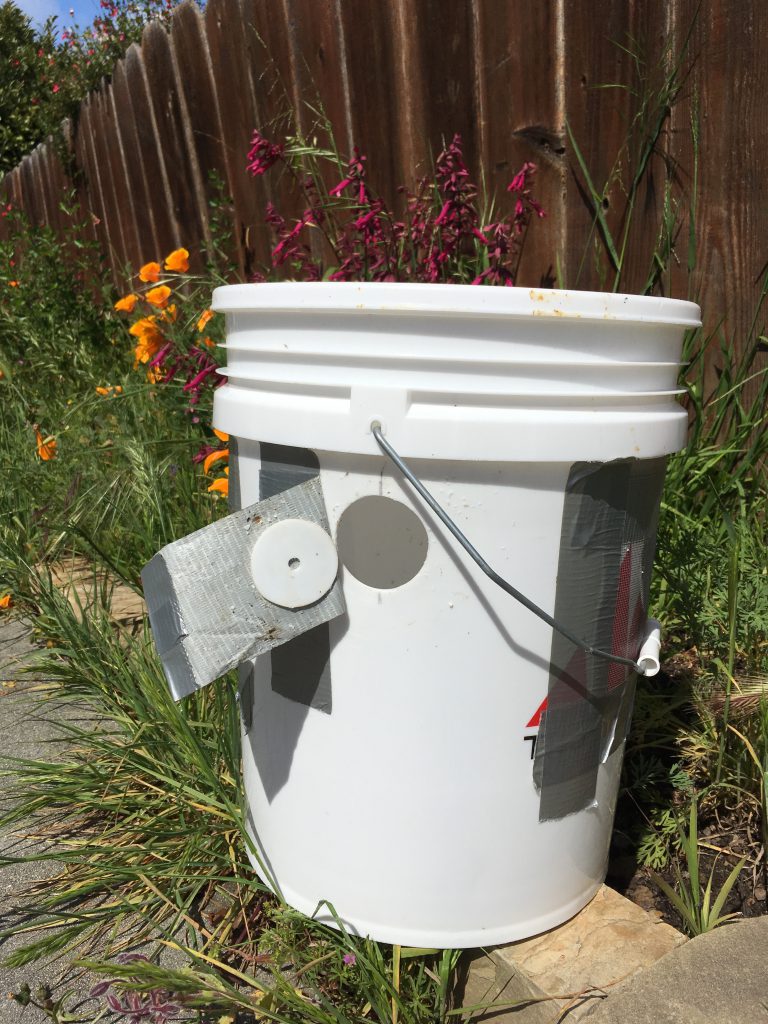
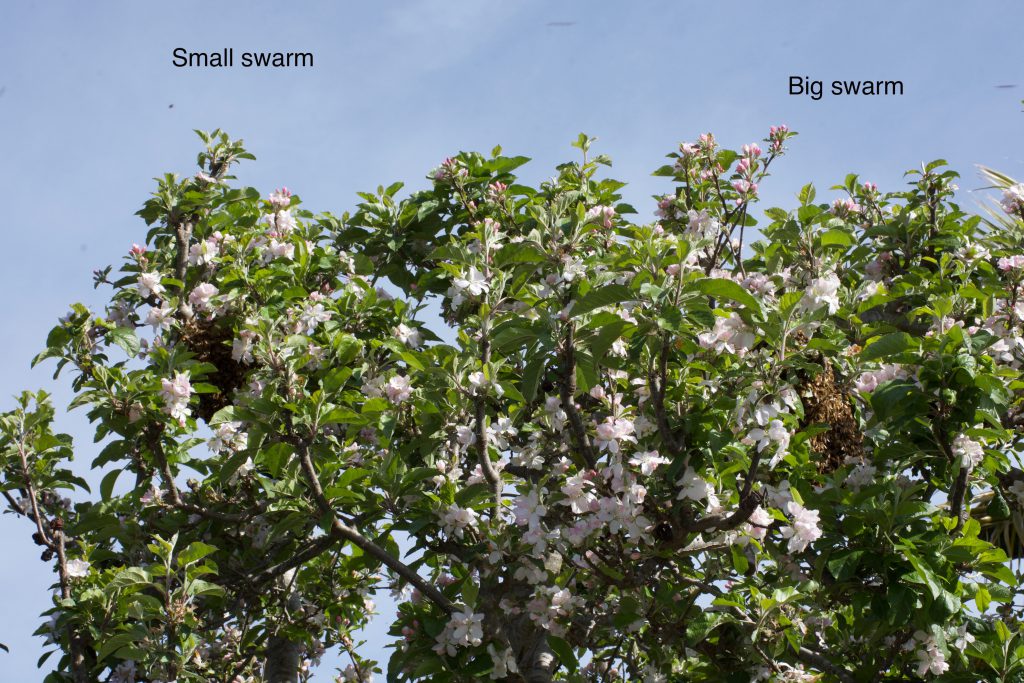
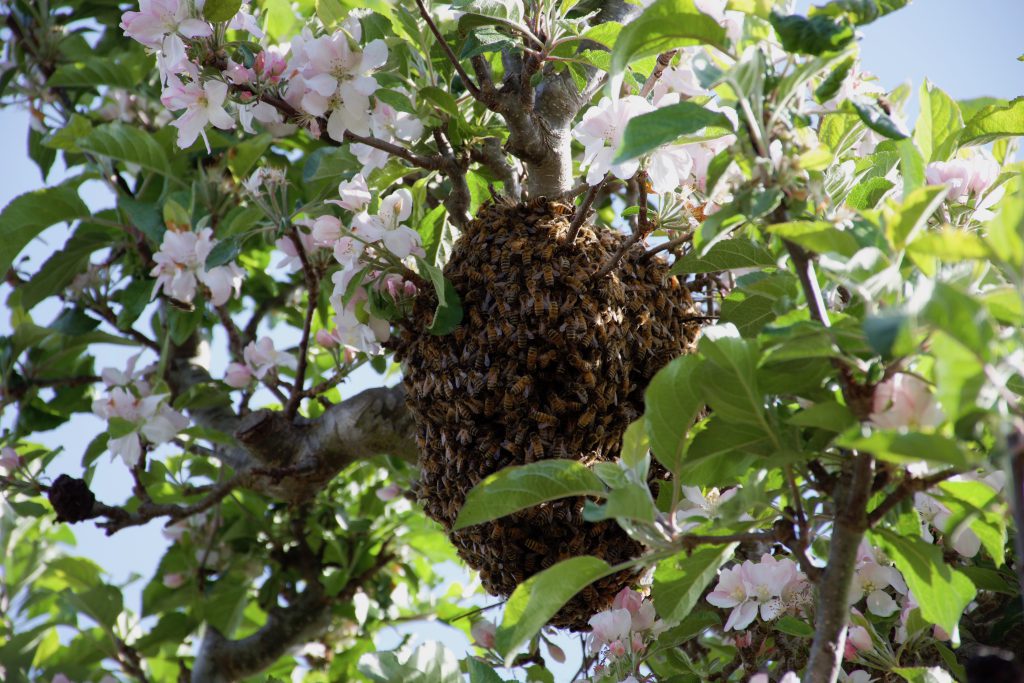
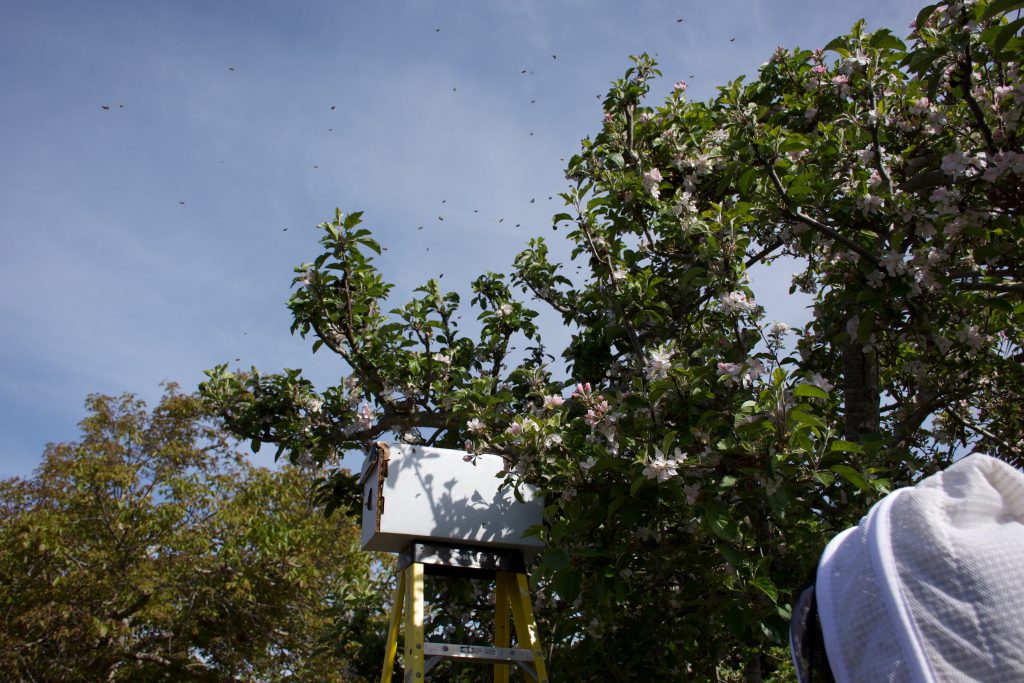
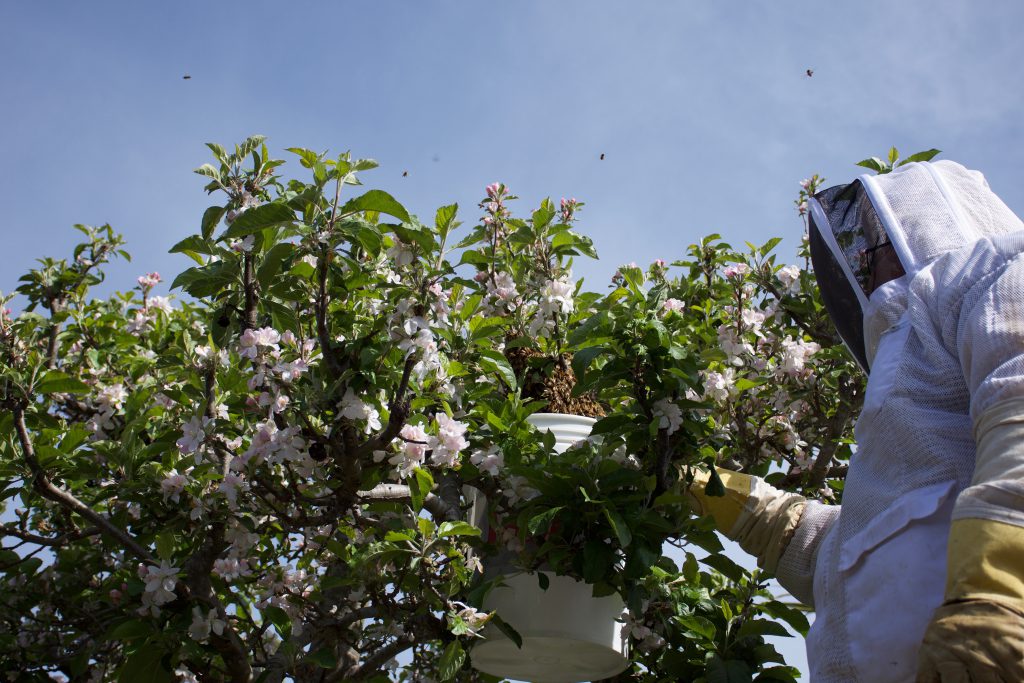
Nice work by the Wild Canyon crew! Thanks for sharing.
Keeping fingers crossed. Maybe you can find another swarm to add to your hives.